Home » Kythira Information » Geography ~ Nature » Kythira Flora » Kythira Semi shrubs
Semi-shrubs of Kythira
In Kythera, due to the varied relief, the island is essentially an elevated plateau with steep coastlines around it, this creates different altitudes, resulting in large differences in rainfall and temperature in many areas. These different local conditions contribute to having a wide variety of plants, i.e. a rich flora. Shrubby areas form the characteristic mosaic of the island’s natural landscape, which consists of dense, often impenetrable, clumps of shrubs, usually 1-3 m high.

Myrtle
The myrtle is an evergreen shrub, with a height that can reach up to 5 meters. It has white flowers with the fruit being a raceme, almost spherical or ellipsoid. Its leaves are lanceolate, pinnate, acuminate and aromatic. It is propagated by seed or by cuttings.
It is cultivated in the open air, in pots and in greenhouses. It is used in perfumery, in the manufacture of cosmetics and in pharmaceuticals. It produces essential oil (myrtle oil). Its durable wood is used in fine woodworking and its branches in basketry. The plant was known since ancient times and is mentioned by Dioscorides.
The myrtle was glorified in Semitic religions and was the sacred plant of Aphrodite of Paphos, who when she emerged naked from the sea hid behind a myrtle. The myrtle was the symbol of beauty and youth. The myrtle was known since ancient times, when it was used as an ornamental plant in temples. Myrtle is also associated with marriage.
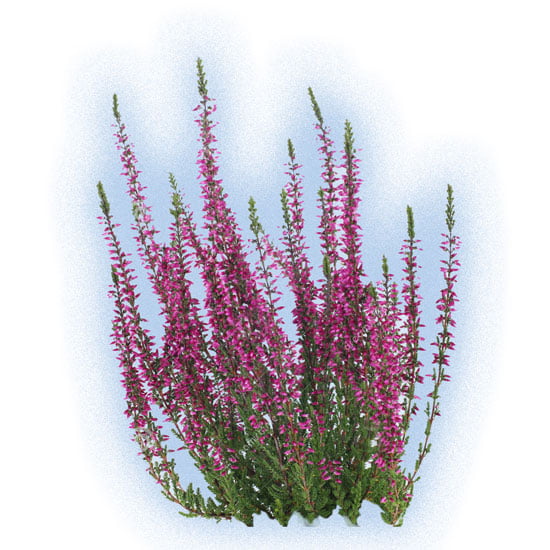
Heather
It is a low shrub with small (4-8 mm) and linear leaves. The flowers are small (3-3.5 mm), bell-shaped, pink with anthers with diverging lobes that protrude. It blooms in autumn, from late August to early November and is one of the characteristics (dominant in the Argalasti region of Pelion, in Chalkidiki, etc.), of the maquis vegetation.
The spiny heather (Erica manipulliflora), commonly known as autumn heath or susoura, belongs to the Ericaceae family, which also includes heathers and rhododendrons. It is a narrow Mediterranean species distributed mainly in the Central and Eastern Mediterranean.
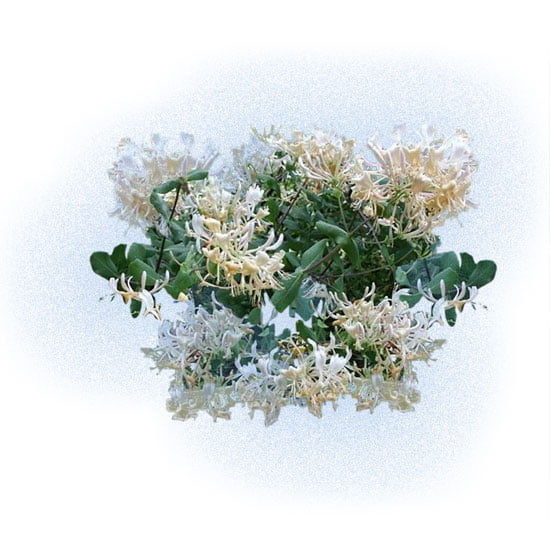
Honeysuckle
Most species of Lonicera are hardy climbers, with a minority of shrubs.[1] Some species (including Lonicera hildebrandiana from the Himalayan foothills and L. etrusca from the Mediterranean) are sensitive and can only be grown outside in subtropical zones. The leaves are opposite, simple ovate, 1–10 cm long. Most are deciduous but a few species are evergreen.
Honeysuckle in Kythira is valued as a garden plant, for its ability to cover unsightly walls and buildings, with its profuse tubular flowers in early summer, and the intense fragrance of many varieties. The hardy climbing types need their roots in the shade and their flowering tops in sunlight or very light shade.

Aperianthus
Aperianthus or apiganos is a perennial, aromatic plant with light green leaves and small flowers. It thrives in dry areas while thanks to its strong aroma and its ability to repel insects from certain crops, it is suitable for gardens. In Crete, it is found almost everywhere in the countryside, and you can also get it from nurseries.
There is a belief that apiganos is stronger if you take a sprout from someone else’s garden and make sure that the person who transplants it is the one who will use it later, because the person’s energy will remain in the leaves and stem of the plant.
Regarding its planting, folk tradition sets certain rules, namely that you should not plant this herb if you feel angry, depressed or anxious.

Astoivi
Astoivi is a type of phrygana that dominates many islands in the Aegean. Phrygana grows in the drymost areas of Greece and up to an altitude of about 300 meters. They consist of sparse and low shrubs with small and often fluffy leaves, thorny branches and are adapted to summer drought. Their characteristic feature is seasonal dimorphism (small leaves in summer, large in winter), which they display to regulate the rate of water loss through transpiration.
Because the astovi has thorns and a structure that prevents grazing, it is considered by many shepherds “foresters” as a weed. Thus, they try in every way to limit it. However, as strange as it may seem, the astovi multiplies and extends its dominance precisely because they fight it. Having adaptations to deal with fire with offshoots from the living root, it not only withstands but easily overcomes the shock of the fire with which the inhabitants of our islands try to limit it.

Asfaka
Asfaka (Phlomis fruticosa), is a woody plant – shrub of the Labiatae family of the Tubular order.
It grows mainly on rocky or stony soils and reaches up to one and a half meters in maximum height. It blooms from late March to early June, depending on the region. Its flowers are yellow and are formed at the tops of the plant.
In the past, it was used for medicine and for the manufacture of gunpowder. Its medicinal properties were known to the ancient Greeks, who used it for various medical purposes. During the Greek Revolution of 1921, it was used to produce a type of gunpowder for the needs of the struggle.
It is also used as a fuel, while in some countries, such as Germany and England, it is also used as an ornamental plant.
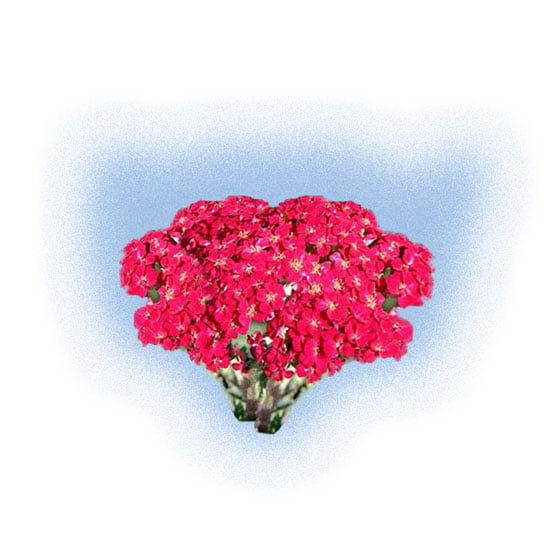
Euphorbia
Euphorbia (scientific name Euphorbia) is a large genus of plants in the Euphorbiaceae family, represented in Greece with more than 40 species. A special characteristic of euphorbias is their cup-shaped inflorescence, which is why it is called cyathion from the ancient Greek word for cup.
Euphorbia lactea cristata is an easy-to-grow succulent, resulting from the grafting of two species. In other words, it is two plants in one! Its upper part is Euphorbia lactea and its color is silver-gray, which can turn reddish if the plant is happy in its environment. Its lower part is usually Euphorbia neriifolia. Its shape resembles a coral and arose from a natural mutation of Euphorbia lactea and is also known as Coral plant.
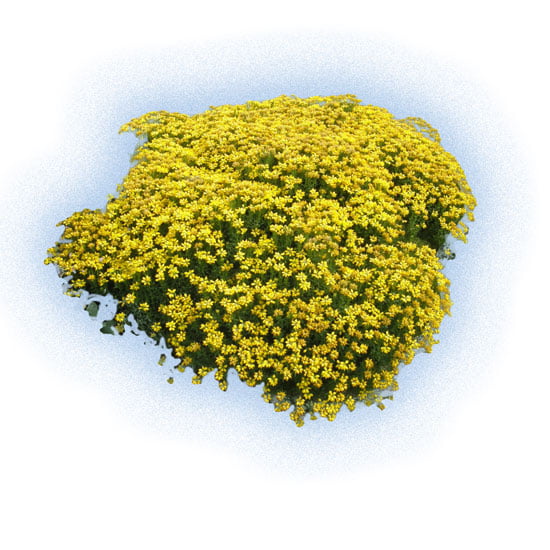
Genista
Genista or Afana is a deciduous, side-branched, compact shrub of small growth. It has aster-shaped, yellow, aromatic flowering in spring. Its branches resemble those of sphagnum. Resistant to very cold, without particular soil and climate requirements.
In Kythira, Genista or Afana is an ornamental shrub, with a height that reaches from 10 centimeters to half a meter. Its width, starting from 50 centimeters, can reach up to 1 meter in extent. To reach its final size, it will take around 5 to 10 years, while after this time it does not grow significantly.
Its green foliage is based on strongly branched, also green shoots, which intertwine with each other, forming small, tufted volumes. Made of small, simple green leaves, it has a sparse appearance, creating a special image of a shrub.
The flowers of the afana appear in early summer. Bright yellow, many together, at the edges of the foliage, they have the shape of a bean flower, while often there are so many in number that they cover its green skeleton.
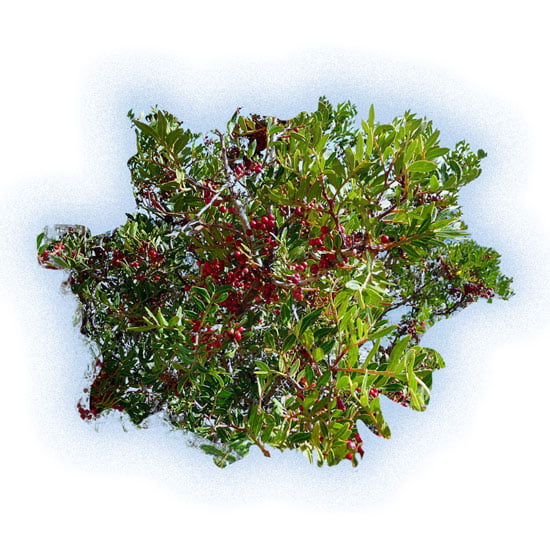
Schinos
Schinos, originating from the natural shrubs of the Mediterranean, is a robust evergreen shrub of great growth. It has dark green and extremely dense foliage, beautiful red flowers that appear from late spring to early summer, and black fruits – in the ripening phase. It is a plant that is particularly easy to grow, very resistant to pests and diseases and requires almost no care.
The Schinos, an integral plant of the Mediterranean landscape, is used inboth in gardening and in landscape architecture, and even in places where few plants survive, such as those located next to or near the sea.
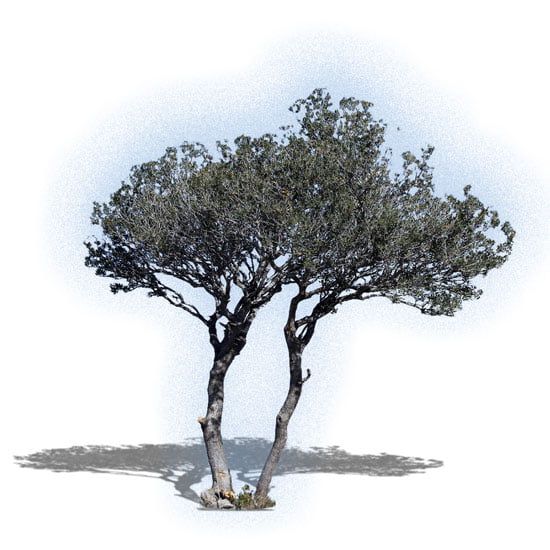
Agrielia
The wild olive tree is found naturally in the evergreen-broadleaf forest zone and is a population with many variations. Its branches are numerous, small and hard, more or less thorny and quite angular (crooked).
The trunk is thick, rough, often twisted, curved or sinuous. In rare cases of centuries-old trees, its height can reach up to 15 meters. The bark is ash-gray and initially, in young trees, it is smooth. Over time, bumps are created and it becomes knotty. The leaves are small and hard, with short petioles, arranged oppositely, leathery with smooth margins. They are lanceolate-elliptical, rounded or oval in shape and their color on the upper side is dark green.
In classical times, it was also called Kotinos, like the wreath made of its branches with which the winner was crowned in the Olympic games of antiquity.
